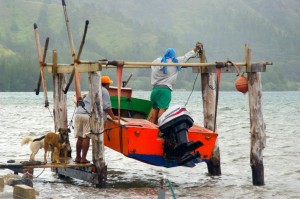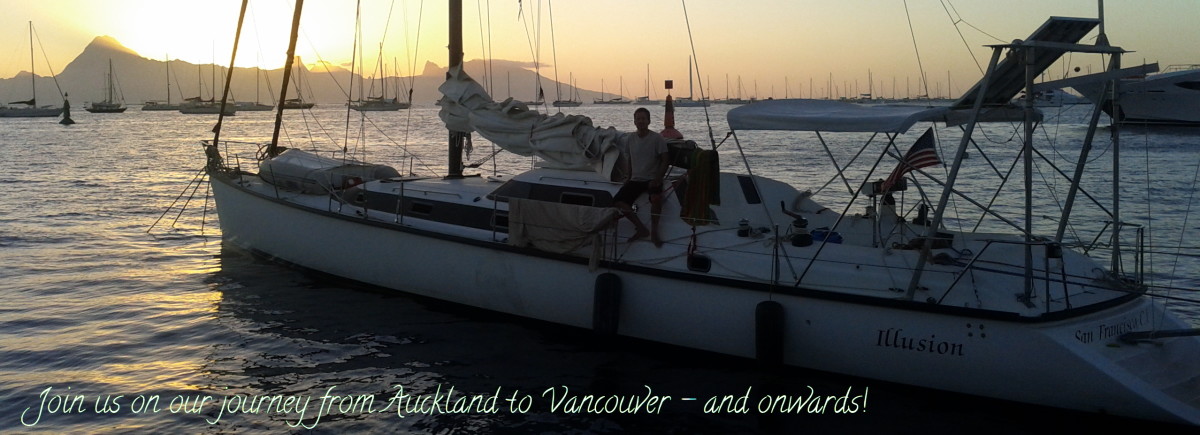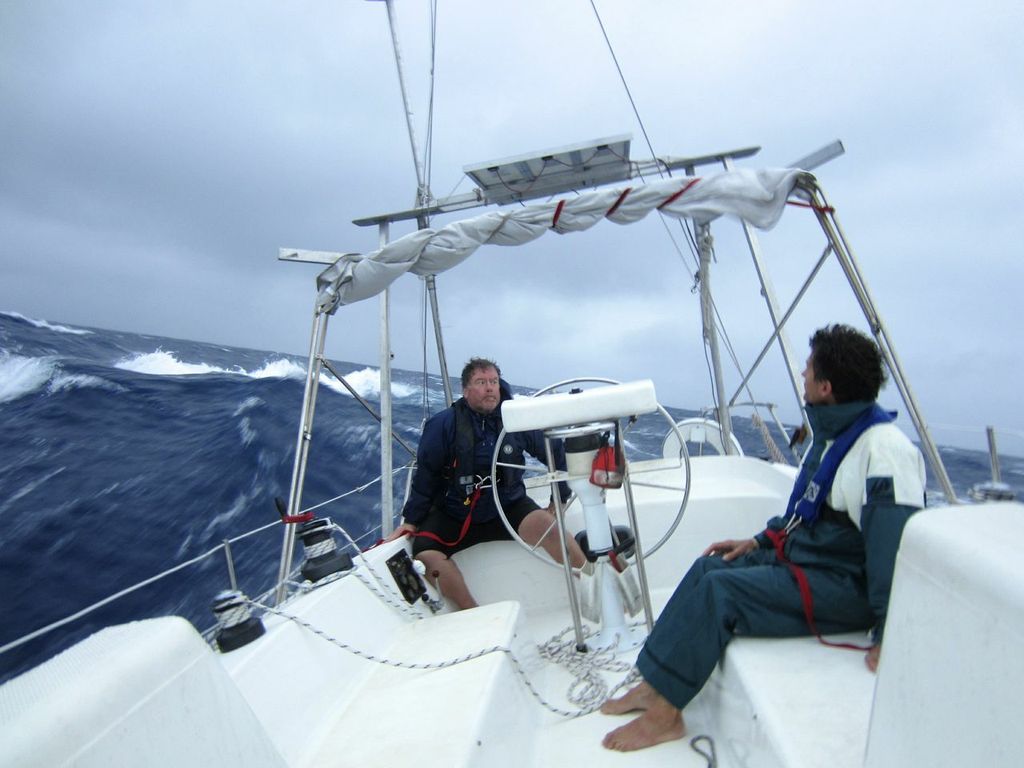Everyone talks about the wind here in Rapa. There are few places one can go to get away from it. Today a few of us went on a walk into a valley facing west, looking out onto the “Pacific” (anything but pacified around Rapa) towards New Zealand – a world of experiences away now, even though we departed less than 2 months ago. Walking in a stream in this valley, I suddenly became aware that the sound of the wind was not with us. That ever constant, gale-force roaring had dissipated and I could hear only the gurgling of water pouring down its rocky bed.
Continue reading “Above all else, it’s the Wind…”
Month: July 2013
Trauma in the Night – Rapa style
The engines (both main yacht and dinghy’s outboard) have had more trauma than any engine should have in a lifetime. Fortunately, the outboard engine has proven very resilient: the latest survival challenge was to be dumped upside down in the water when the crazy winds here flipped the dinghy over in the middle of the night. We went out only a few minutes later (hard to tell something happened, except the bumping noise of the dinghy against the main hull was slightly different), but we lost everything that wasn’t attached (3 oars, a bailing bucket & sponge). The fuel container was floating a few meters behind the boat, still attached to the engine, which was secured to the dinghy, which was secured by a line and a cable to the main boat. No problem, just flip the dinghy upright in 80+ km/h winds and ~1 meter “seas” — in the anchorage! Absurd. Very few days here have not had high winds and choppy waters. This is not a normal South Sea anchorage. Even now it’s howling outside, but the winds have settled down to about 50km/h; gusting as I write this to 65! The Rapans have a legend about not cursing the wind…
Continue reading “Trauma in the Night – Rapa style”
Feasts and friendliness – post by Deb
 The island of Rapa is ruggedly beautiful with jagged green peaks surrounding a large bay. Atop the ridges are the remains of twelve ancient forts built by the old tribes of Rapa, who according to legend, were fierce warriors who waged constant war against one other. George Vancouver, the first European to “discover” the island in 1791 (small world), estimated that there were about 2,000 inhabitants at the time. After the missionaries arrived in the mid nineteenth century with their western diseases, the population plummeted to a few hundred. Today, there are 500 residents who pretty much live off the bounty of the land. Continue reading “Feasts and friendliness – post by Deb”
The island of Rapa is ruggedly beautiful with jagged green peaks surrounding a large bay. Atop the ridges are the remains of twelve ancient forts built by the old tribes of Rapa, who according to legend, were fierce warriors who waged constant war against one other. George Vancouver, the first European to “discover” the island in 1791 (small world), estimated that there were about 2,000 inhabitants at the time. After the missionaries arrived in the mid nineteenth century with their western diseases, the population plummeted to a few hundred. Today, there are 500 residents who pretty much live off the bounty of the land. Continue reading “Feasts and friendliness – post by Deb”
Landfall – post by John
June 22 2013 we made landfall, on the French Polynesian island called Rapa Iti. It is a very small island. Looking at a map of the polynesian islands it is west and south, on the bottom right hand corner. The next islands over are Pitcairn and Easter. In fact, the original name for Easter Island is Rapa Nui. Nui means large and Iti means small.
This island has stone structures too. It is shaped like a letter C, with a harbour on the east side. The island is volcanic of course, and the tall mountains are carved with weather erosion, creating jagged peaks, even sharper and more dramatic than on the Napali trail in Kauai or in the western fjords of the south island of New Zealand. As you enter the harbour you see on the very tips of the jagged peaks, stone forts shaped like bee hives. Pa, they are called, and they are built on a peak for self defence. There are twelve of these, and many years ago they were built and used by each of the twelve families that lived here. Warfare was evidently common, and these forts were necessary for protection. Continue reading “Landfall – post by John”
Sailing to Rapa Iti – post by Deb
We left Auckland on May 30th, sailing east towards Rapa in the Iles Australis. It was surreal to watch the city lights disappear on the horizon – hard to believe that the time had finally come to begin our journey. The weather forecast showed two low pressure systems building, so we sailed southeast to avoid them. The first few days were slow going due to light winds, but it picked up by day four, so that we were able to average about 150 nautical miles per day. We headed northeast, hoping to catch the coat tails of the storm and ride them east (low pressure systems rotate clockwise in the southern hemisphere). The winds and seas got progressively bigger and we found ourselves in the middle of a 420 mile wide gale. No skirting this one unfortunately.

